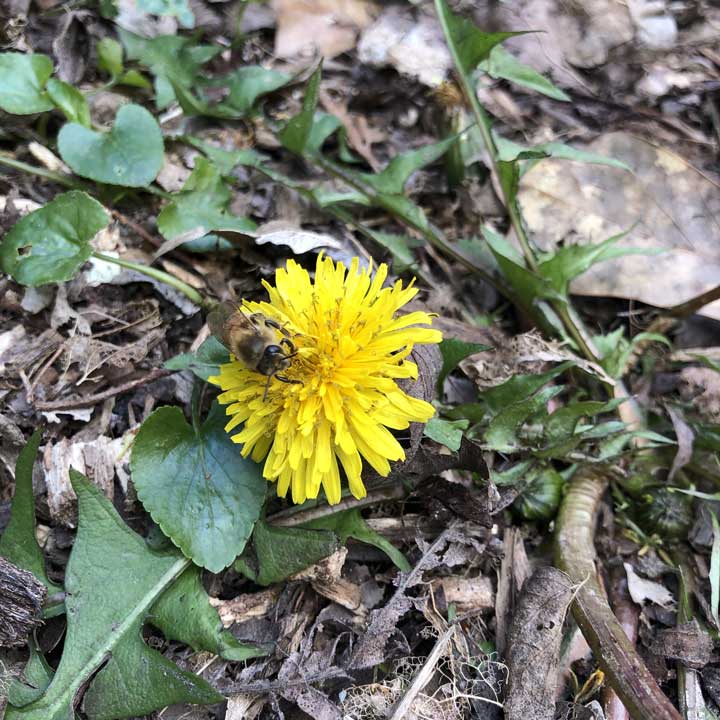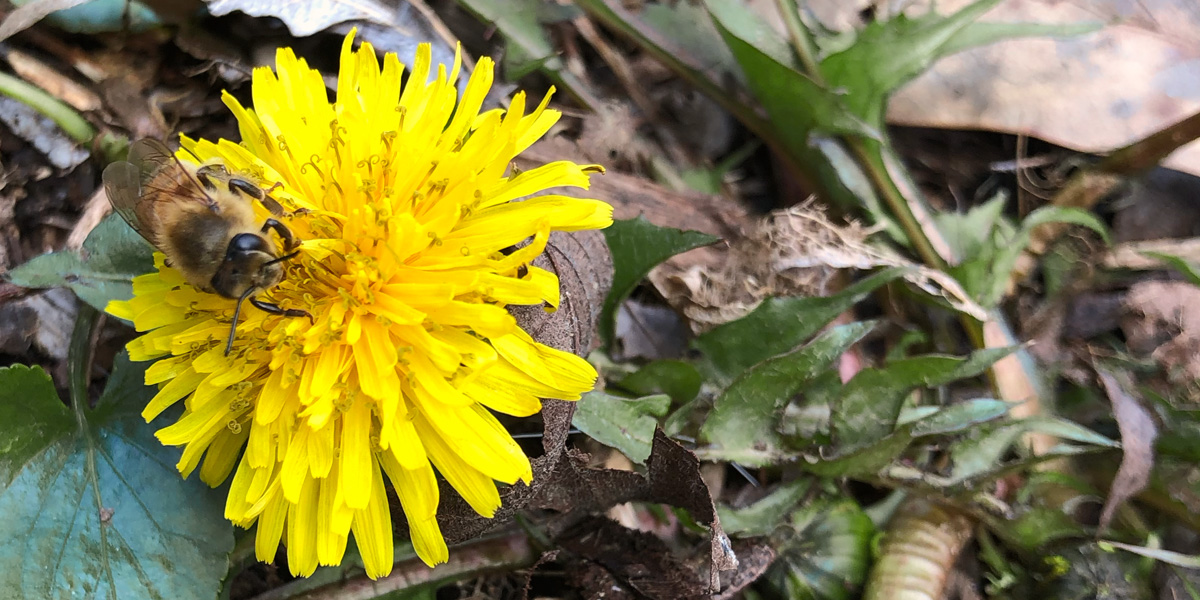
Spring is one of my favorite times of the year, as it offers a bounty of flowers and baby creatures from birds and squirrels to bees and rabbits. The beautiful fragrance and colors of spring draws us outdoors to dance and play in fields of flowers as if we were a sweet little bee. Spring is one of the most important times for filling up with food after a long winter of scarcity. Spring is like nature’s reward of abundance after a winter of fasting. It is so important to allow those spring flowers to grow so that the bees have an early source of food. Some of the plants that we call “weeds” are actually really important sources of food for our pollinators. These plants include dandelion, henbit, chickweed, dead nettle, clover, ground ivy and plantain to name a few. All of these plants are also great herbs for human health as well.
If we wait a little later to mow our yards and allow these plants to flower, they can provide some much needed support for honeybees and our native pollinators. We should also be careful not to spray our yards when there are plants blooming, and cease spraying for any reason if we can in order to improve our own health as well as the health and lives of our pollinators. It is also important to leave the dead stems in our gardens standing until temperatures reach above the 50s for at least one full week. This allows the pollinators that laid their eggs in the dead stems for overwintering to emerge and their eggs to hatch. Honey bees will start flying and foraging heavily when the temperatures reach above 55 degrees. Tread carefully when walking bare-foot in the garden as you might step on a bee. Also, don’t forget to leave some fresh water out for the bees, as they will be super thirsty after a long winter indoors.
If you would like to help the bees out and plant some early flowering plants, some good choices are borages, crocus, clovers, coneflowers, coreopsis, phlox, blackberries, wild roses and hellebore. Trees provide some of the best sources of pollen, and some early flowering trees include oaks, maples, blueberries, hawthorns, red bud, poplars and wild varieties of buckeye. Remember that it is best to plant native plants, as they are more adapted to the area for survival, and are less likely to cause an issue if they spread.

